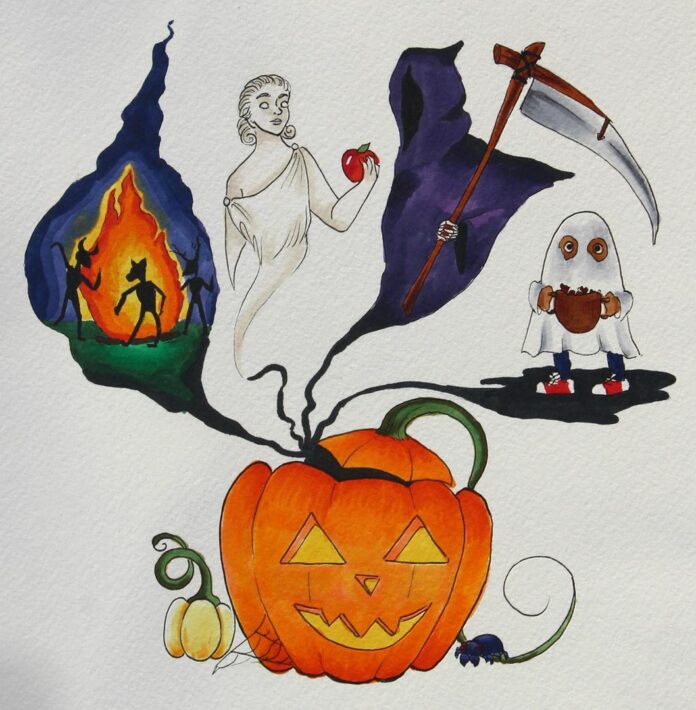A night of dressing up as ghosts and demons is definitely not what the Christians had in mind when they decided on a holiday to celebrate their dead martyrs and saints. In all fairness, they can’t really claim something they didn’t come up with. After all, just like most things in history and culture, nothing is lost — everything is stolen.
Just like jack-o’-lanterns and Fright Nights stole Halloween from the Church, the Catholics stole it from the Romans, who stole it from the Celtics, who probably stole it from the aliens. Either way, Halloween has a long history of reinventing itself every couple hundred years — it’s the Madonna of holidays.
Our story starts off in Europe, thousands of years ago. Samhain, as our Halloween was originally called, was a festival for the Celtics to celebrate their deceased at a night when the dead walked the earth. They also made sure to wear animal masks to ward off the evil spirits, a tradition that lives on to this day — works great against demons, but not as well against your aunt’s disastrous pumpkin pie attempts.
They also don’t seem to work against Romans either, who eventually conquered most of the Celtic territory and stole Samhain from the original redheads. Tough luck for the Celtics, but lovely for the spirits, who now had a legion of angry Italians worshiping them on top of the mask-wearing gingers. Furthermore, Samhain also coincided with the Roman celebration of fruit goddess Pomona, so now they were celebrating the dead, but also apples, because why not?
Eventually, as Christianity spread and overtook the Roman Empire, Samhain was stolen yet again. Now, in addition to the dead (and apples), we were celebrating the martyrs and the saints. It was originally called All Hallows’ Eve, but because we humans are lazy with our spelling, we eventually gave up the triple-word title for simply Halloween — it’s catchy, I’ll give them that.
But how did Christians start twisting their nose at the holiday they stole, you may ask? They fought and defeated both the mystic Celtics and the angry Romans. Who could steal Halloween from such brave conquerors? As it turns out, they had yet one great enemy to face, one they just could not defeat: children.
(That might have been a bit dramatic, but I stand by it — some children are, indeed, the devil’s spawn.)
As Halloween took a sharp turn away from prayers and devotion, foolish children, teens, and young adults found in it an opportunity to wreak havoc in their peaceful 1900s neighborhoods. Soon enough, All Hallows’ Eve lost its religious essence and became the secular holiday we recognize today.
Now, it’s mainly an opportunity for kids to get cavities from eating too much candy, for teens to pee their pants after watching The Ring for the first time, and for young adults to do what they do best: get drunk and reckless at a stranger’s party while wearing the minimum legal amount of clothing.
The truth is that Halloween has gone through many changes over the centuries, but one thing remains constant: the human obsession with death. Samhain, All Hallows’ Eve, Halloween… They’re all different ways of celebrating that which is the most natural and certain thing all of us will face at some point. Either way, whether you’re a natural redhead, an angry Italian, a pious Christian, or a foolish teenager, there’s a fun Halloween night out there waiting for you.
For an entire month, we’ll watch horrifying movies with terrible writing, storm our sleep with nightmares of bloody murderers, and pay to go into haunted houses for no other reason than to crap our pants. It makes no sense. Still, when November rolls around, we’ll realize that it wasn’t so bad, for, as it turns out, the once grim realization of our mortality has now become the perfect memory of a fun night out with friends, full of laughter, magic, and intrigue.


